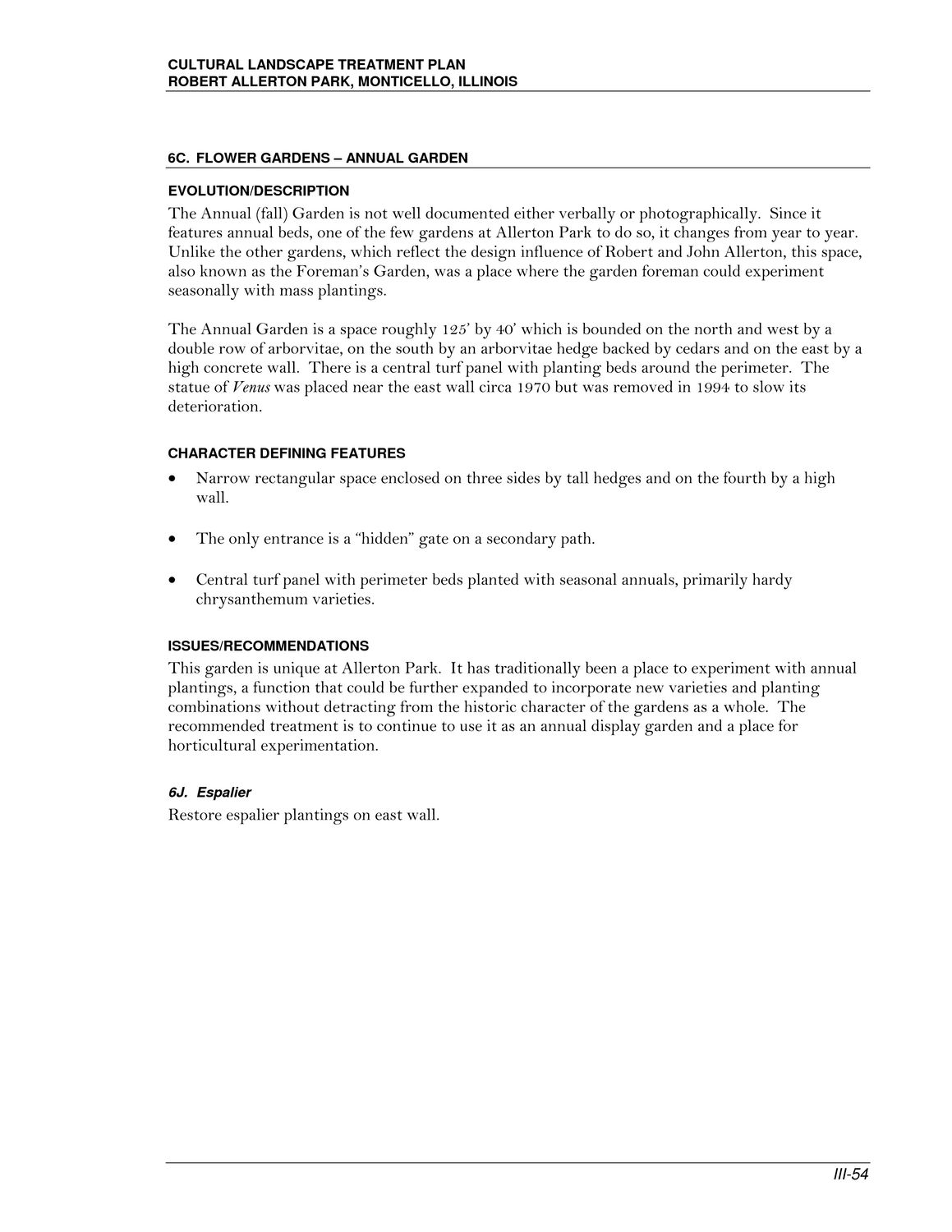Caption: Map of UIUC (2001) (Allerton)
This is a reduced-resolution page image for fast online browsing.

EXTRACTED TEXT FROM PAGE:
CULTURAL LANDSCAPE TREATMENT PLAN ROBERT ALLERTON PARK, MONTICELLO, ILLINOIS 6C. FLOWER GARDENS – ANNUAL GARDEN EVOLUTION/DESCRIPTION The Annual (fall) Garden is not well documented either verbally or photographically. Since it features annual beds, one of the few gardens at Allerton Park to do so, it changes from year to year. Unlike the other gardens, which reflect the design influence of Robert and John Allerton, this space, also known as the Foreman’s Garden, was a place where the garden foreman could experiment seasonally with mass plantings. The Annual Garden is a space roughly 125’ by 40’ which is bounded on the north and west by a double row of arborvitae, on the south by an arborvitae hedge backed by cedars and on the east by a high concrete wall. There is a central turf panel with planting beds around the perimeter. The statue of Venus was placed near the east wall circa 1970 but was removed in 1994 to slow its deterioration. CHARACTER DEFINING FEATURES • • • Narrow rectangular space enclosed on three sides by tall hedges and on the fourth by a high wall. The only entrance is a “hidden” gate on a secondary path. Central turf panel with perimeter beds planted with seasonal annuals, primarily hardy chrysanthemum varieties. ISSUES/RECOMMENDATIONS This garden is unique at Allerton Park. It has traditionally been a place to experiment with annual plantings, a function that could be further expanded to incorporate new varieties and planting combinations without detracting from the historic character of the gardens as a whole. The recommended treatment is to continue to use it as an annual display garden and a place for horticultural experimentation. 6J. Espalier Restore espalier plantings on east wall. III-54
|